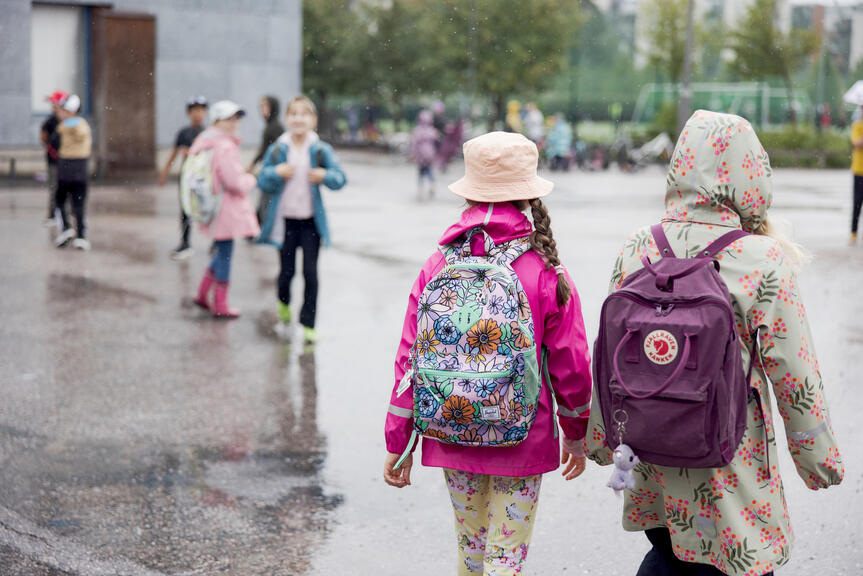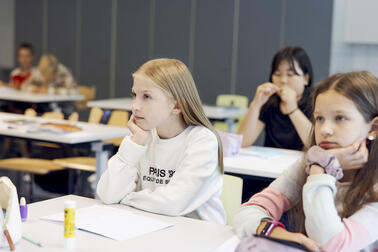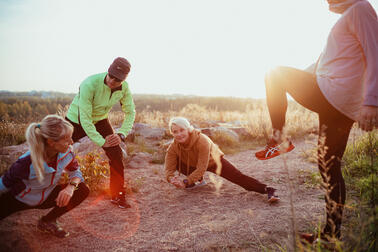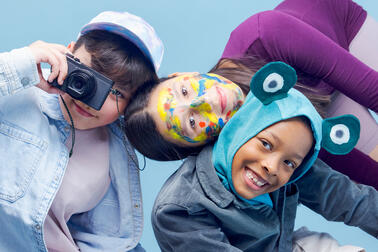
A total of 23,502 children and youth in Helsinki responded to the School Health Promotion study conducted by the National Institute for Health and Welfare (THL) in the spring of 2023. Participants in the survey included the 4th, 5th, 8th, and 9th grades of basic education, as well as students in the first and second years of general upper secondary and vocational education. THL conducts the survey every two years. The summary report of Helsinki’s results aims to provide an overview of children’s and young people’s experiences of health, well-being and safety. The results have been analysed by gender and educational level and compared to previous survey years. To some degree, comparisons are also made with the results for the entire country and the rest of the metropolitan area.
Leisure activities and daily physical activities are increasing
The vast majority of children and young people have a weekly hobby. In 4th and 5th grade, in particular, both girls (92%) and boys (91%) have increased their levels of leisure activities since the previous year. Also, more children exercise at least an hour a day, boys more frequently than girls. A gender gap in activity is observed at all levels of education.
More young people are participating in guided art and culture activities or sports. Participation in guided leisure activities is generally higher in Helsinki than the national average.
Independent physical activities are slightly less common than in 2021. At all levels of education, girls are particularly less likely to engage in independent physical activities than in the previous year. However, 74% of upper secondary school students and 8th and 9th graders reported engaging in independent physical activities every week. Participation in independent physical activities is more common than in guided physical activities.
Substance use remains at the same level; mental well-being faces some challenges
The vast majority of children and young people in Helsinki consider their health to be good. Their experience of their health being at least moderate has not deteriorated as much as in the previous two surveys. A significantly higher proportion of girls than boys consider their health average or poor.
The mental well-being challenges experienced by girls are at more alarming levels than before. Well over a third of young girls experience moderate to severe anxiety.
No change in substance use has been observed in recent years, with rates remaining the same since 2017. An exception to this is the sharp increase in the use of electronic cigarettes. This change is already evident from 4th and 5th grade onwards. Although experimentation with illegal drugs and cannabis among young people in Helsinki has not increased, it is still higher than the national average. More than 60% of young people also feel that obtaining drugs in their local area is easy.
Youth loneliness is decreasing, but perceived insecurity has increased
The experience of loneliness among young people became more prevalent during the coronavirus period. This increasing trend has now levelled off, and the percentages have decreased since 2021. Still, loneliness experienced by young people is more prevalent than in 2019.
Phenomena that increase the experience of insecurity in the social environment in which children grow up are on the rise. More are experiencing physical threats, discrimination or bullying at school weekly. More than half of young girls continue to experience unwanted sexual advances or harassment. Experiences of harassment, discrimination and physical threats in public spaces are more common in Helsinki than the national average. Experiences of physical threats have become more common, especially at basic education grade levels. For example, 26% of boys in 8th and 9th grade have experienced physical threats in the past year.
Children and youth are enjoying school, and the increase in school burnout has stopped
A large percentage of children and young people in Helsinki like going to school, and they feel that they are an important part of their school or classroom community. In particular, most students in the 4th and 5th grades of basic education and the first and second years of vocational education and training enjoy going to school.
The increasing prevalence of school burnout experienced by young people has stopped and has started to decline for the 8th and 9th grades and in secondary school. Despite that positive trend, 45% of girls in upper secondary school and 47% of girls in the 8th and 9th grades of basic education experience burnout-related exhaustion.
A larger percentage of learners at all educational levels feel they have good opportunities to participate or have an impact at school. The majority of young people also feel that they have access to help and support for their well-being, learning and studies when they need it, and the opportunity to discuss their concerns with adults at school.


